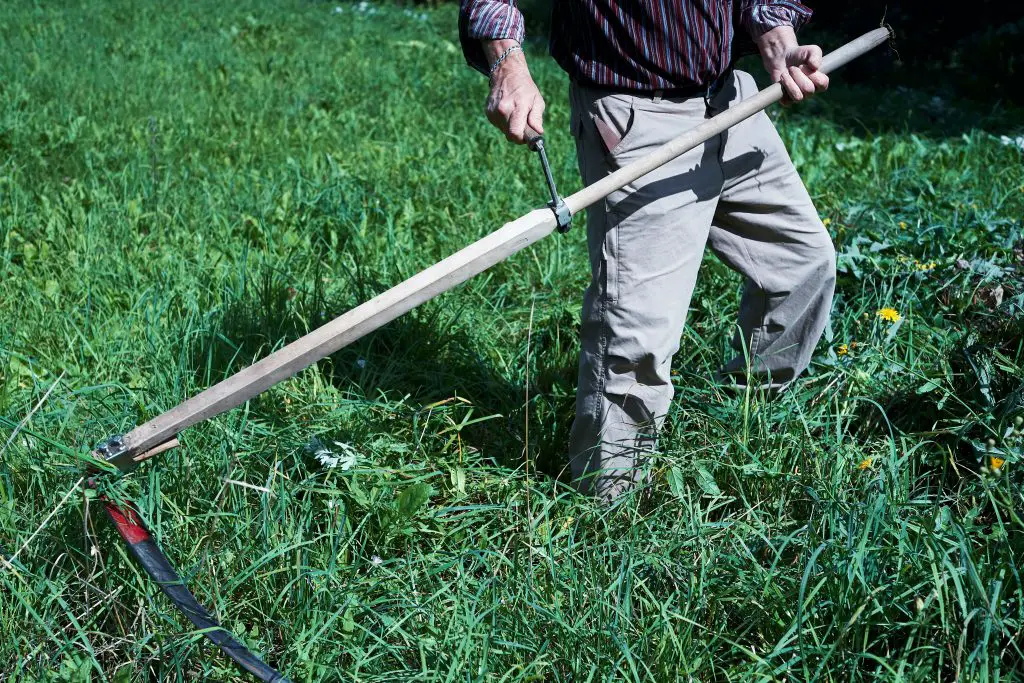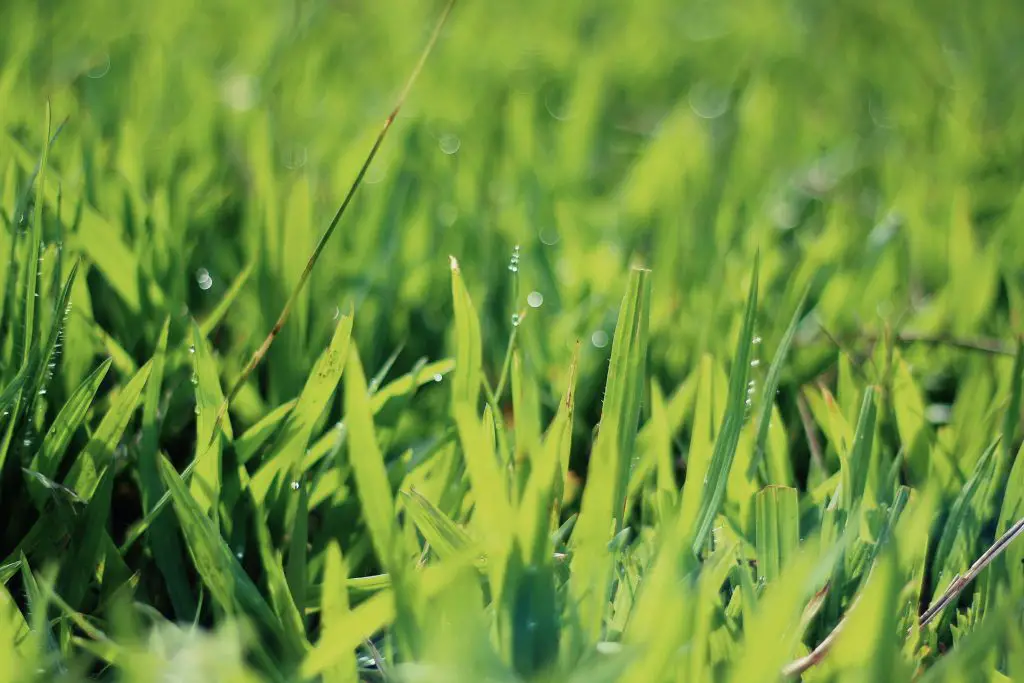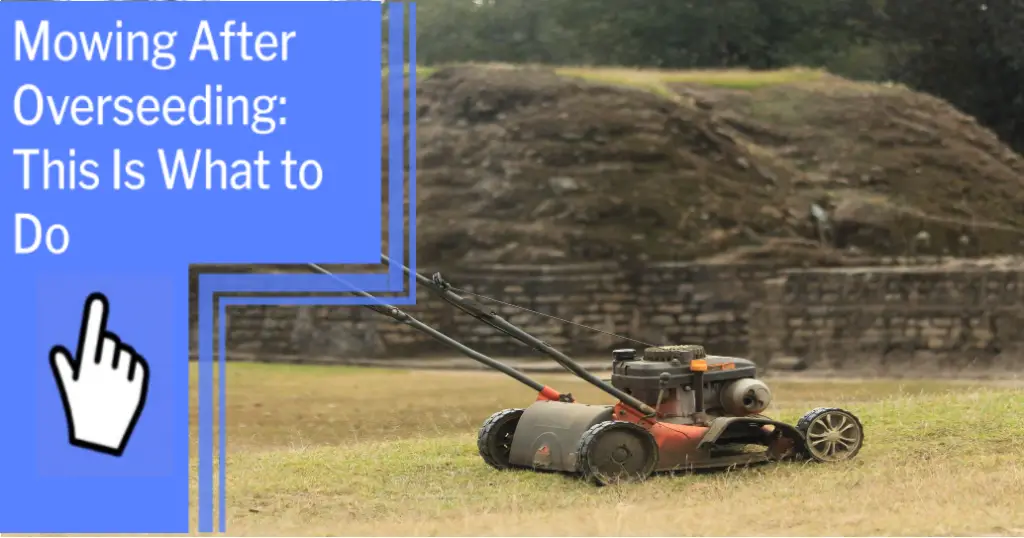What you find on this page:
Healthy green grass in your lawn gives you that refreshing feeling and a breath of fresh air every time you step out. But maintaining such a lawn requires dedication, time, and money. That’s why sometimes you’ll find the grass looking quite dull, especially after a hot summer season.
Overseeding can help revive your grass, no matter how old it may be. You don’t even have to pluck the existing grass to plant new ones. With overseeding, spread the new grass seedlings on the existing lawn using the right equipment.
You have to patiently wait for about two to three weeks before you can think of mowing. Mowing grass after overseeding is suitable when the new grassroots have settled and developed.
How to Take Care of Your Lawn After Overseeding?
You already know what overseeding is and how it can help keep your grass and lawn thriving. But, do you know the best time for overseeding?
Early fall is the best time for overseeding your lawn. During this time, days are warm and nights cooler, providing perfect conditions for the seedlings to germinate. However, even if you missed this window period, you can still overseed your lawn. Depending on where you live, overseeding is still possible for the whole of September to early October.
Some homeowners find it necessary to combine aeration and overseeding to improve germination. But how do you care for your lawn after aeration and overseeding to ensure proper seed germination?
Remember, overseeding will not take effect if you sit around doing nothing. Your lawn needs excellent maintenance for close to two months for successful germination. There are two ways you can take care of your lawn after overseeding. These are watering and mowing.
Watering
The seedlings need moisture to germinate. That’s why you must water the lawn after overseeding for a couple of days.
While watering, ensure you don’t make the soil soaking wet or underwater. Overwatering may lead to lawn diseases, while underwatering will make the soil dry, killing all the roots. The best method is to make the place damp.
Watering should start after you finish overseeding the lawn, one to two times a day for better results. The best times are in the morning and evening when there’s not much heat.
Don’t stop watering even after you notice the seeds germinating. Instead, reduce the watering frequency but increase the amount of water. The water has to penetrate the soil to reach the root zone, so water thoroughly.
Also, don’t use fertilizer during the first three weeks after overseeding. Doing this will make the old grass grow fast, hindering the development of new roots.
Mowing
How long do you wait before mowing after overseeding? Most homeowners are always in a hurry for the first mowing after aeration and overseeding. But doing this causes disturbance to the new roots that are developing. Your lawn needs enough rest for the new grass seedlings to settle in and thrive. Unfortunately, what the mower provides is nothing but interference.
Proper timing is necessary in this case. Usually, after watering your lawn for a couple of weeks, you’ll notice the grass growing. That’s a good indication that you should prepare for mowing.
The grass must grow up to a certain height before you can start mowing. The recommended size depends on the type of grass you’ve used. Here are some height recommendations for popular species:
- Bermuda grass has a mowing height of between 3/4 and 1 1/2 inches
- Zoysia between 1-2 inches
- Centipede, 1-2 inches
- Kentucky bluegrass, up to 2 1/2 inches
- St. Augustine, up to 2 1/2 inches
- Tall Fescue, 2-3 inches
Mowing after overseeding Fescue, for instance, requires you to wait for the grass to reach at least two inches in height.
Mowing after overseeding bluegrass should only happen after the bluegrass reaches 2 1/2 inches.
Once the grass reaches the recommended height, you can proceed with the first mowing after overseeding. The best practice is to wait at least two weeks after overseeding to start mowing. That’s enough time for the new grassroots to settle and develop. But this will also depend on the type of grass, temperature, and the conditions of your lawn.
If you’re unsure, you should let the grass grow to at least three inches tall to start mowing. When mowing after overseeding, ensure the soil is dry enough so that the mower doesn’t form ruts on the lawn. Your mower blades also need to be sharp to produce clean cuts.

Different Mowing Techniques
The first mowing after aeration and overseeding can be exciting. However, if you aren’t careful, you can easily damage your lawn. Thankfully, you can employ any of the following mowing techniques for excellent results.
Different Mower Blades
The shape of your mower blades highly determines how good or bad you’ll be mowing your lawn. As mentioned above, your mower blades must be very sharp to provide clean and even cuts, regardless of the type you’re using. The two basic types of mower blades are standard and mulching blades.
If the lawn doesn’t have weed, then you can only use the standard sharp blades since you’ll be leaving the grass clippings on the lawn. These grass clippings are a good source of nutrients and moisture for the soil.
If your yard has weed, you must use the mulching blade attached to a bag. This way, you can collect the grass clippings in the bag to dispose of away from the lawn.
If you’re wondering where you can sharpen the different mower blades you have, take them to any hardware store of your choice. They usually sharpen mower blades at a fee.
Have Patience
Mowing grass after overseeding needs to be done carefully to avoid cutting off new seedlings. Ensure you’re moving the lawn mower slowly, calculating every move you make. This way, you’ll not cut short the root development of the new seedlings.
Don’t Mow a Wet Lawn
Mowing a wet lawn is not recommended due to several reasons. First, lawn diseases tend to thrive when the grass is wet, and cutting it at this time will only spread the disease.
Second, you may end up with an uneven grass cut on a lawn that looks so messy. And worst of all, your mower may get clogged in the process, prompting you to clean it more often. You definitely want to avoid mowing wet grass after overseeding.
Mowing Height
When doing your first mow after overseeding, set your mower at the highest height to ensure you don’t affect the root system of the grass. Also, ensure you don’t cut more than a third of the grass height.
Overall, the grass should remain tall enough to keep healthy growing roots and short enough to look good after mowing.

Tips for Successful Mowing After Overseeding
The way to a fresh and healthy-looking lawn is successful mowing grass after overseeding. The question is, how do you achieve successful mowing?
A few mistakes may hinder successful mowing after aeration and overseeding. Therefore, your goal is to avoid these mistakes as much as possible. Here are three effective tips you can employ.
Using the Right Equipment
For excellent overseeding results, you must use the right equipment for seeding. You can use two types, slit seeder and overseeder.
The overseeder machine maintains the proper aesthetics of your yard but will not spread the seedlings evenly. You must first aerate your lawn before overseeding to improve seed germination.
The slit seeder is perhaps the most suitable equipment to use. With its vertical-cutting blades, this machine creates uniform small ditches for the seedlings on the ground. A slit seeder will also hammer your grass seeds on the lawn for better soil contact, necessary for proper germination.
Overseeding at the Wrong Time
The conditions must be excellent for new grass to thrive, which highly depends on your region. For instance, overseeding ahead of the winter season is a bad idea. That’s because frost will form, killing your grass seedlings before they develop. Similarly, summer seasons are not favorable for the growth of new seeds due to too much heat, which can only suppress them.
If you’re working with cool-season grasses like the Kentucky bluegrass and fine Fescue, overseeding should be in early spring or fall.
For the warm-season grasses like Zoysia, Centipede, and St. Augustine, overseeding should be in early summer or late spring. So, after overseeding in the spring, how long do you wait until mowing after overseeding? In the spring, wait at least two weeks.
Avoid Overseeding During Dry Weather
Overseeding is only effective when the lawn is moist or wet. This way, the seeder equipment can easily penetrate the soil for excellent seed germination.
Otherwise, you’ll require more energy to push the machine to penetrate the compact soil in dry seasons. The best option is to wait for rainfall before you can overseed your lawn.
Conclusion
Mowing grass after overseeding requires patience and proper timing, depending on the type of grass. If you decide to do it immediately after overseeding, the mower will damage the new grassroots, stopping their growth. That’s why you should wait for at least two weeks after overseeding for the new grass to reach the recommended height of three inches before mowing.






